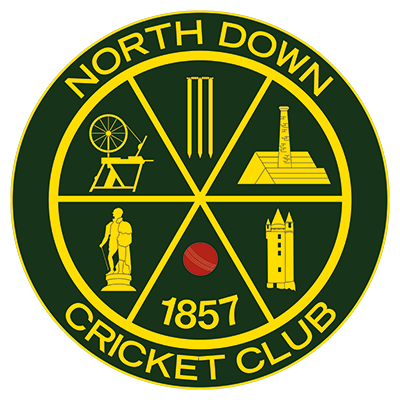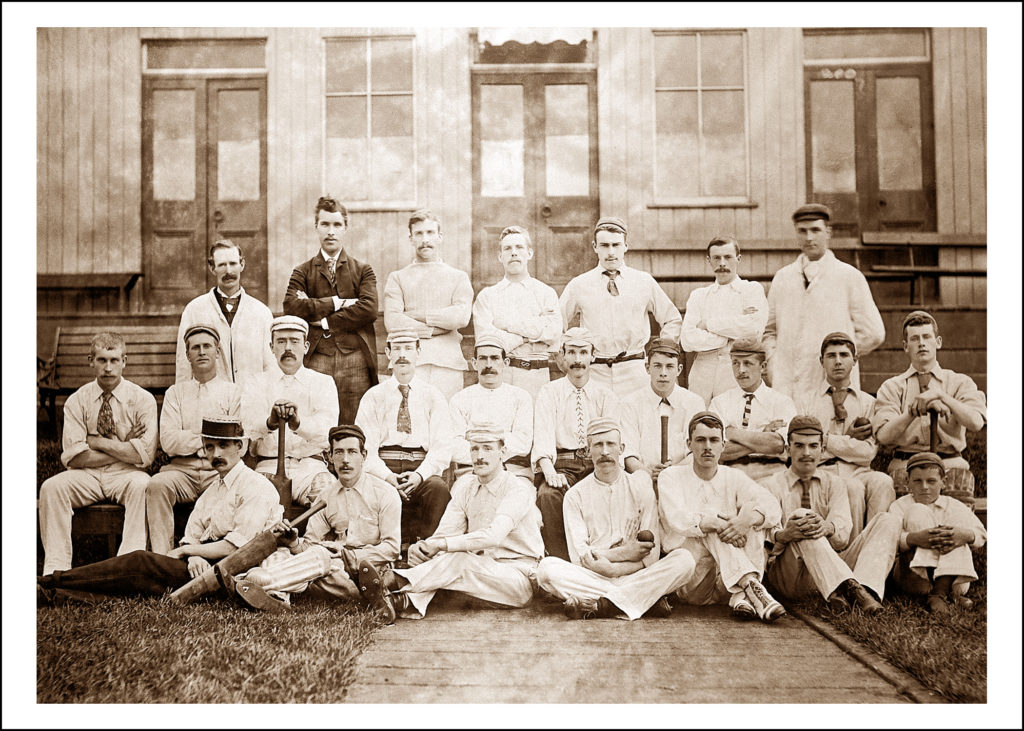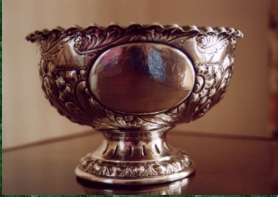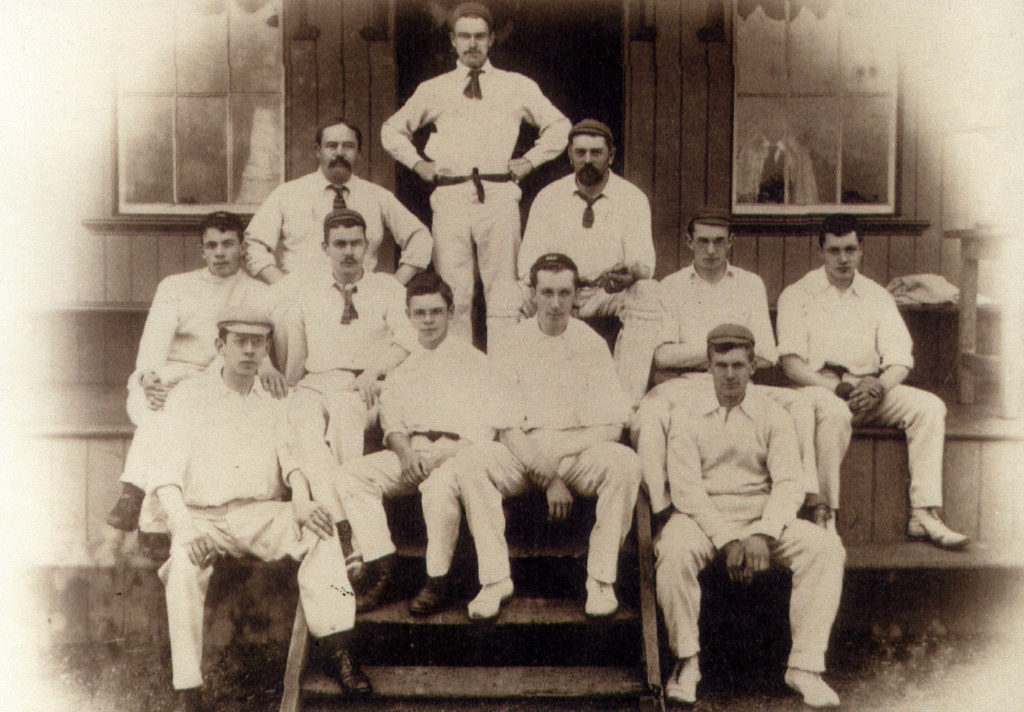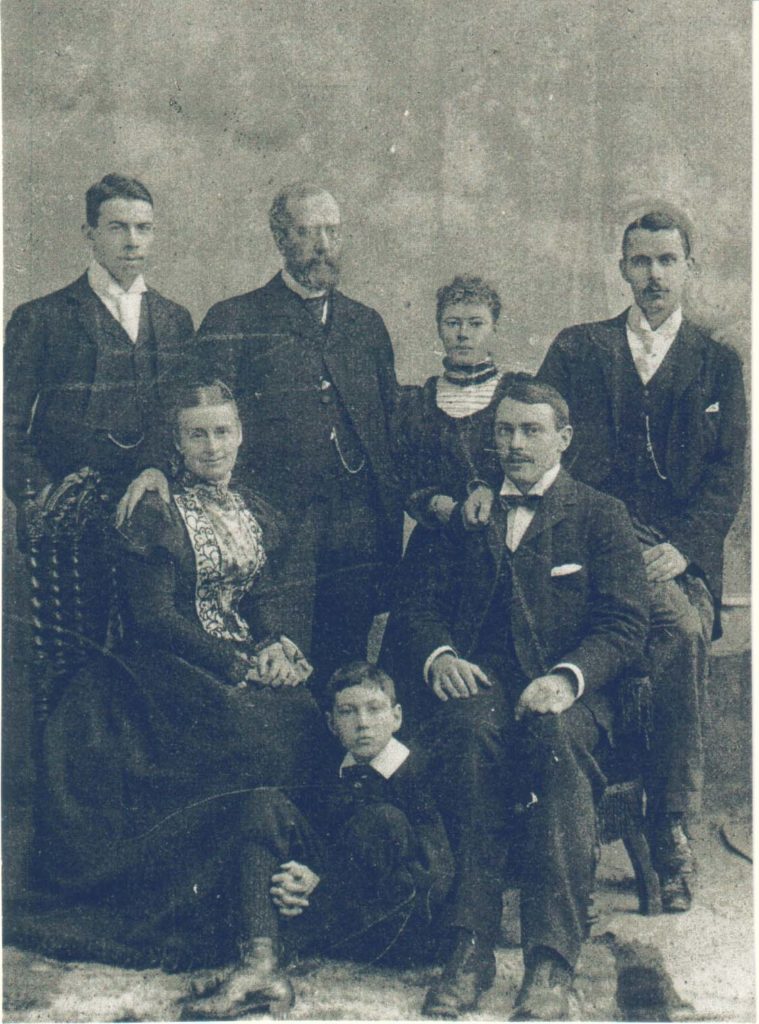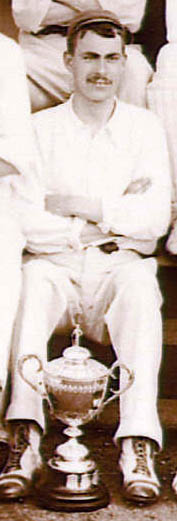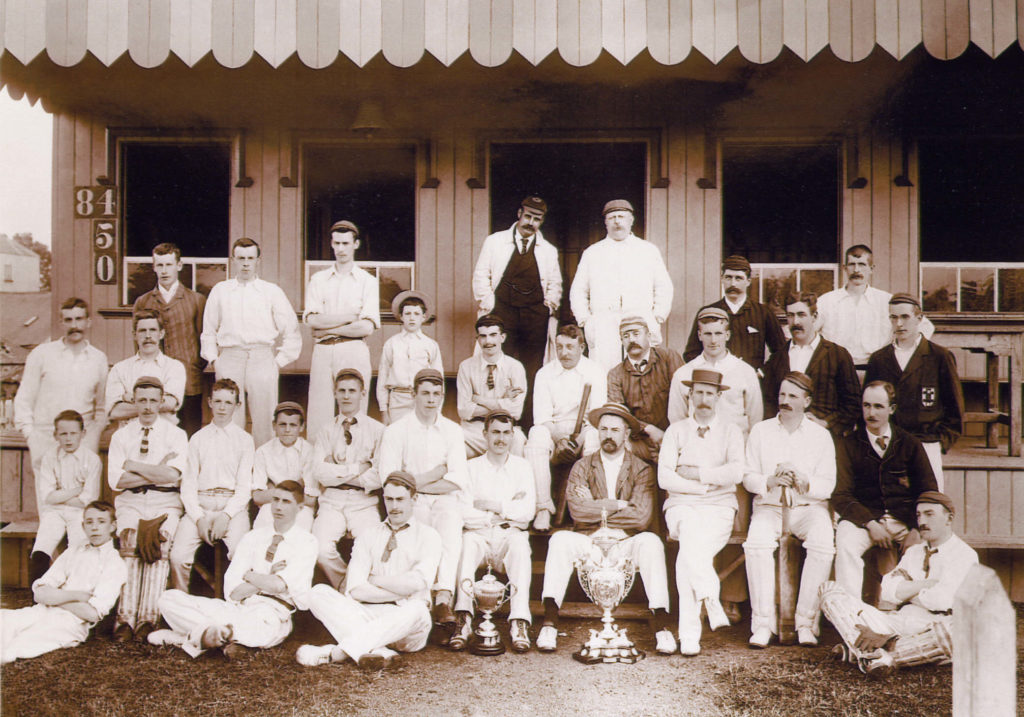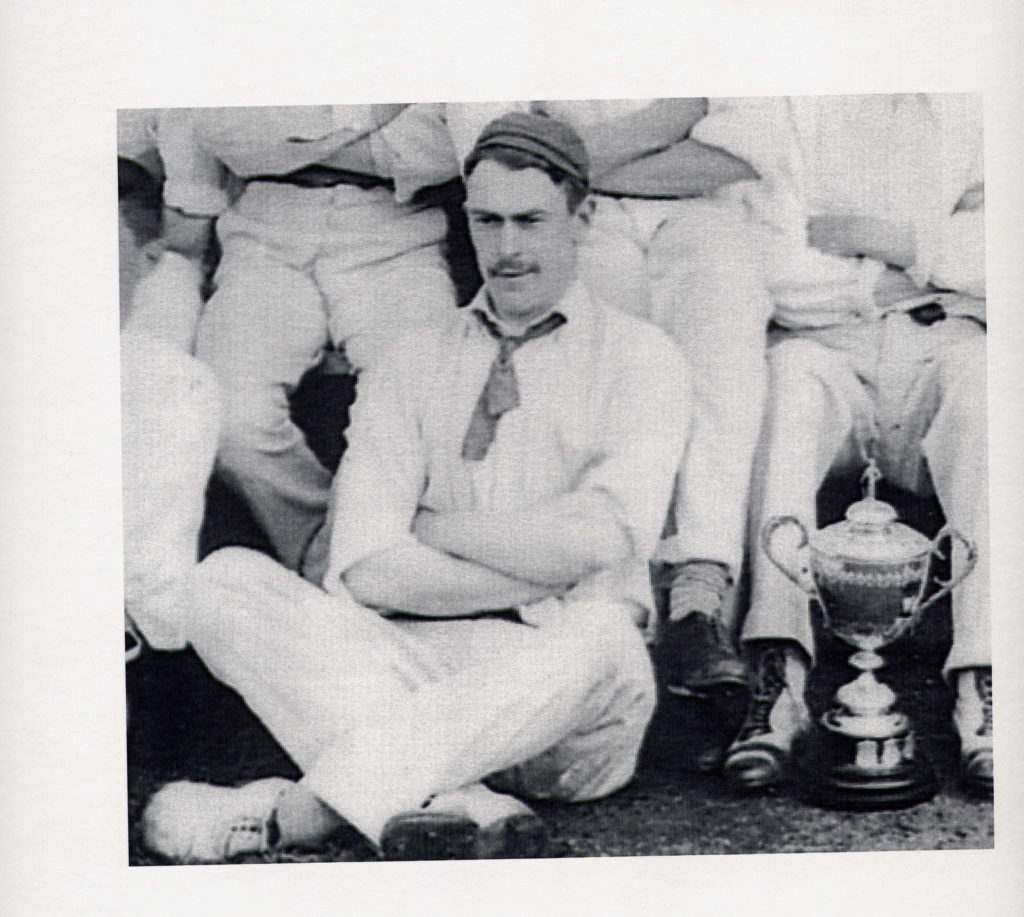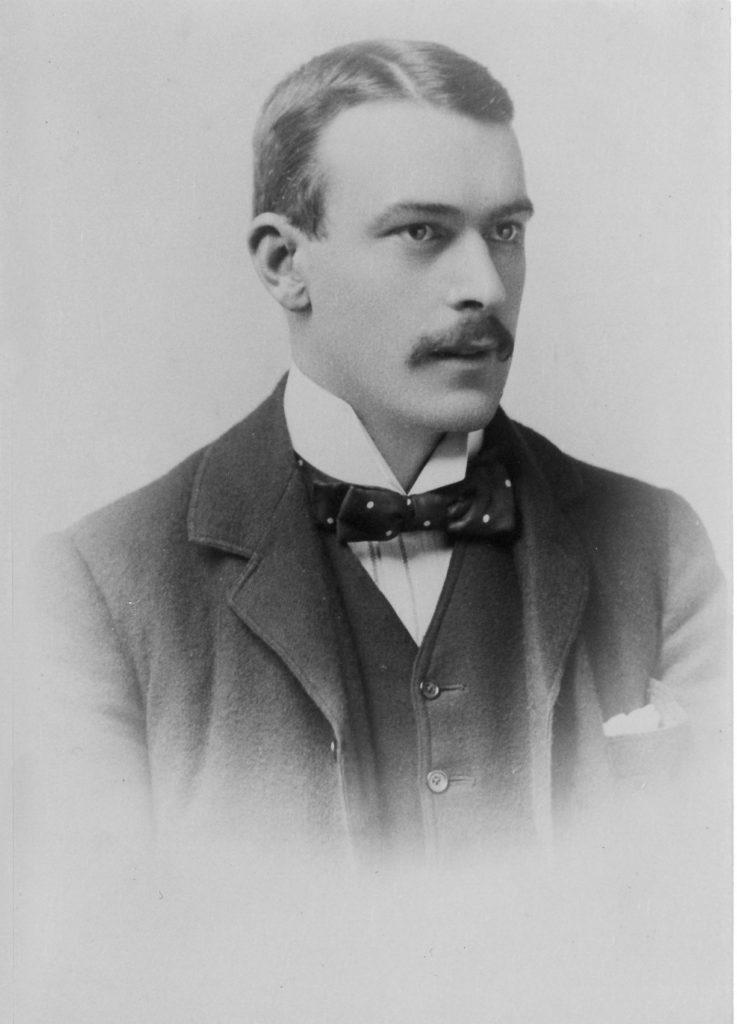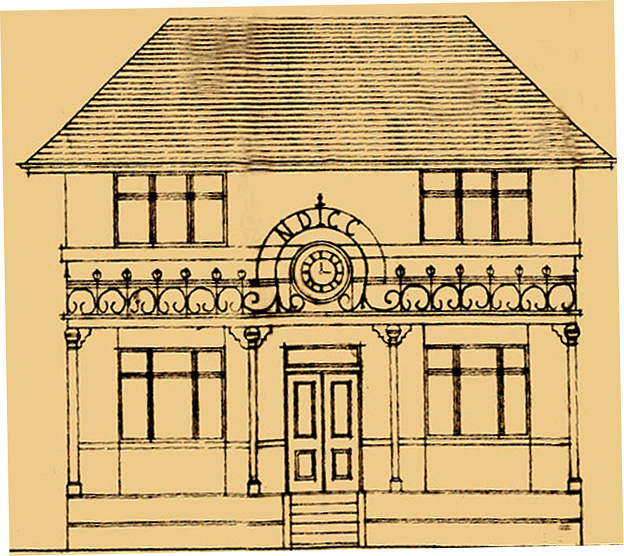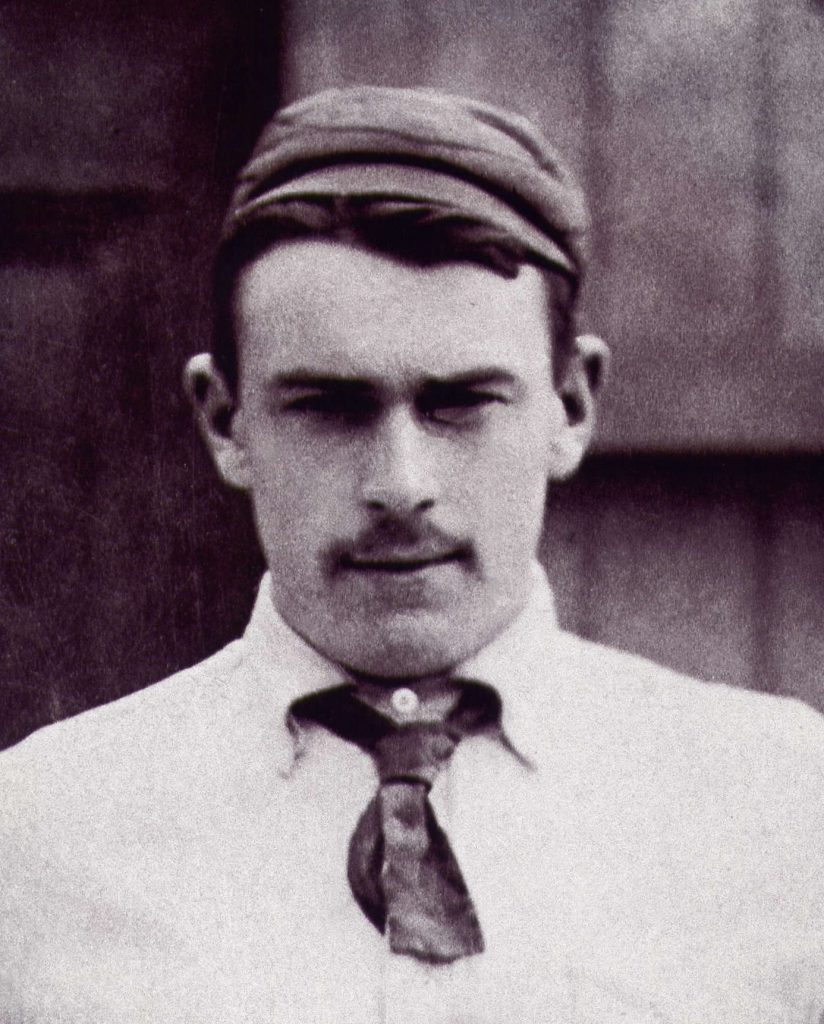
Thomas Andrews Jnr
RMS Titanic was the second of a trio of luxury superliners designed to provide an express transatlantic service for the White Star Line. She was built at Harland and Wolff shipyard in Belfast and was the largest passenger steamship in the world. Construction began in March 1909 under the watchful eyes of William Pirrie, chairman at Harland & Wolff, Thomas Andrews, the chief designer and Alexander Carlisle, the general manager, and she was launched on the 31st of May 1911, the pride and joy of her Belfast workforce.
During her maiden voyage from Southampton to Cherbourg to Queenstown, destination New York, she struck an Atlantic iceberg late on the 14th April 1912 and sank, in just under three hours, with a great loss of life. Reports of Thomas Andrews assisting with the rescue of passengers arrived on shore with those fortunate to survive, and he went down with the ship, his body never recovered. One can only imagine the devastation felt by his widow, Helen, and at Ardara by his parents, three brothers and sister Elizabeth.
Thomas Andrews was born in Ardara House in Comber into a well to do and much respected family of long standing in the town. His brother James became Lord Chief Justice, John Miller was the Prime Minister of Northern Ireland during the Second World War and William became High Sheriff of Down, managing director in Comber Spinning Mill and held a great many honorary positions in society. Thomas was educated at the Royal Belfast Academical Institution and from there worked his way from the ‘shop floor’ through the ranks to become the chief designer at Harland and Wolff. He was the inspiration behind the design of the magnificent ‘Titanic’.
He was brought up surrounded by cricket at his home in Ardara and as a boy he accompanied his elders to matches and enjoyed the wide-open spaces at ‘The Green’. ‘The Admiral’ as he was known, played for the 2nd XI, a number four or five batsman who occasionally bowled and was frequently run out, ‘thrown out’ or recorded in the scorebook as ‘duck’. His best bowling performance was one that he would have treasured, as his five wickets for 17 runs was recorded against the Comber Spinning Mill in 1892. In 1893 he played in the annual Andrews XI versus North Down match and scored a ‘duck’ in both innings for the family.
The following year he played for Queen’s Island, his employer, against North Down at Comber, and was bowled by his close friend John Macdonald for two runs and the next week he hit a swashbuckling 31 against the Spinning Mill before he was clean bowled by brother James. His invaluable 22 not out in the 1894 Junior Cup Final ensured that the trophy came to ‘The Green’ for the first time and by 1897 he was at the peak of his involvement at the club and, together with brother John Miller, he donated a rose bowl to be presented annually to the 2nd XI bowler who took the most wickets during the season.
Saturday April 20th 1912 was noted in the North Down fixture book as a General Practice. It was cancelled, to be replaced by a much more sombre meeting by the cricket and hockey club members, who drew up the following resolution.
At a joint meeting of the members of the North Down Cricket and Hockey Clubs held in the Pavilion on Saty 20th April 1912, the following resolution of sympathy was unanimously passed and copies forwarded to the Right Hon. Thos Andrews & Mrs Andrews, Ardara, Comber.
“We, a number of the members of the North Down Cricket and Hockey Clubs meeting voluntarily and spontaneously, desire to give expression to our sincere sorrow & regret at the irreparable calamity which has overtaken you and the members of your family through the loss of your noble, loved and devoted son, and we as fellow members, many of us acquainted with him from boyhood days, desire to offer our sincere sympathy in this your hour of darkness & distress”.
Such was the volume of mail received by Thomas Andrews Snr. that the reply was posted a month later to David Gold, the club secretary:
“Will you kindly convey to the members of the North Down Cricket & Hockey Clubs the sincere thanks of Mrs Andrews and myself & our family for the very kind resolution of sympathy with us in our great sorrow which they have been good enough to adopt & forward to us. The heroism of our son up to his last moment & the sympathy of so many kind friends are our comfort. I trust I shall be excused for the delay in replying as I have had a very large correspondence to deal with of late”.
Similar letters were sent from the club to Thomas’s widow, Helen, and addressed to her parents’ home in Dunmurry. She replied thanking the club:
“For their kind resolution of deep sympathy and sorrow for me and my family in our great loss, and also for the well deserved attributes expressed to a noble life that was heroically self-sacrificed in accomplishing the rescue of others”
The nine-man Guarantee Group was a very select group of workers headed by Thomas Andrews, who accompanied Titanic on her maiden voyage, to attend to any unfinished work or problems that might appear on the voyage to New York and back. It was a great honour, especially for an apprentice, to be asked to make the trip.
There would have been much excitement and pride in the Watson family at Madrid Street in Belfast when son Ennis was included. Ennis Hastings Watson was an apprentice electrician at Harland and Wolff who studied successfully at the Belfast Municipal Technical Institute for five years and had a promising future ahead of him with Harlands, until he lost his life on the fateful voyage with ‘Titanic’.
“Please convey to the members of North Down Cricket Club the heartfelt gratitude of my wife, family and myself for their kind and sincere sympathy in our very sad bereavement.It is hard to say ‘thy will be done’ but we find consolation in the thought that he died doing his duty by the side of so many brave men. It is our earnest prayer that the Great Consoler maysend comfort to the hearts of those who are likewise stricken”.
